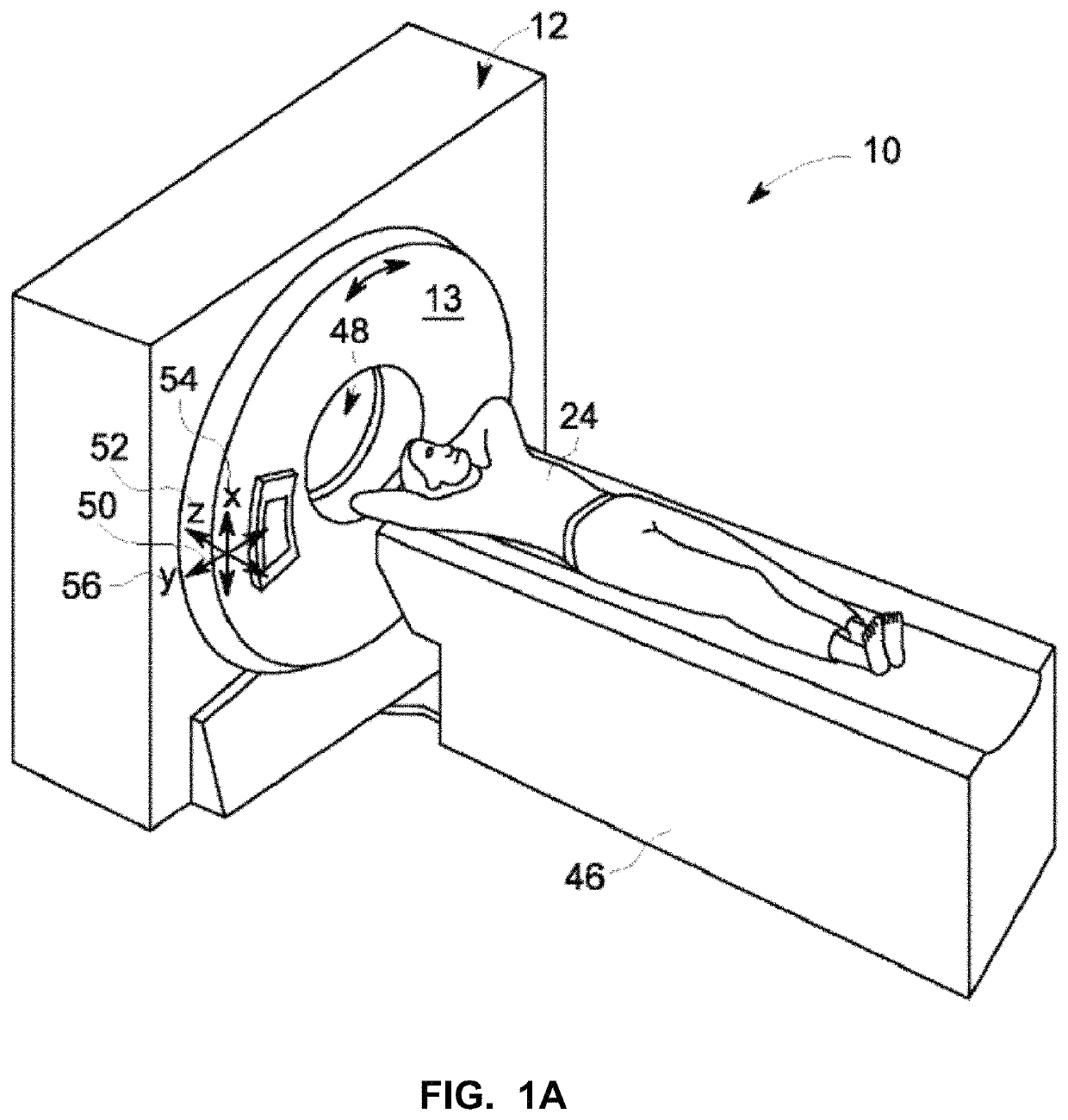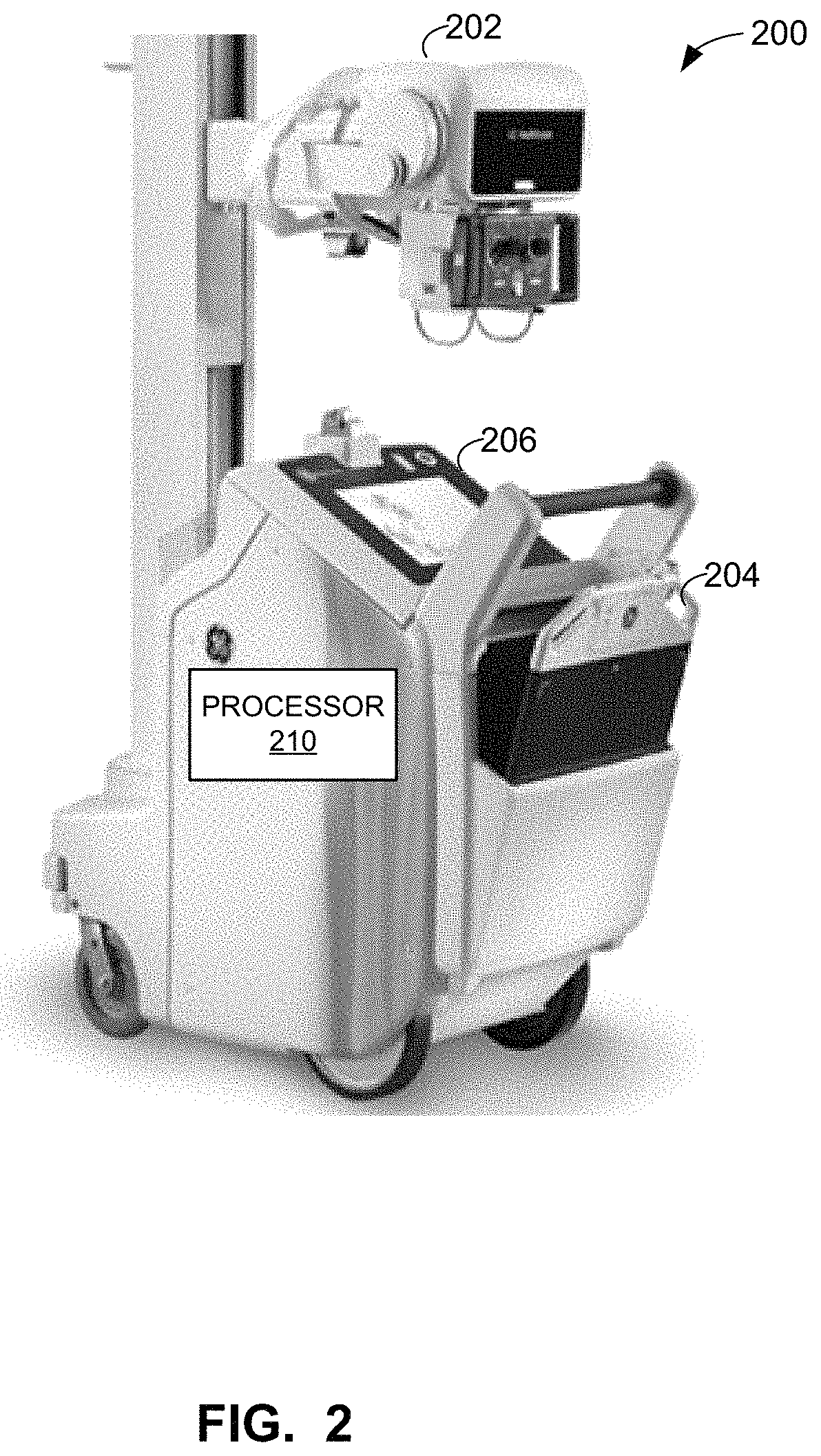Systems and methods to deliver point of care alerts for radiological findings
a technology of alerts and point of care, applied in the field of improved learning systems and methods for medical image processing, can solve the problems of less staff, less skilled staff, and difficulty in effective management and use of imaging and information systems for examination, diagnosis, and treatment of patients, and achieve the effect of improving imaging quality control
- Summary
- Abstract
- Description
- Claims
- Application Information
AI Technical Summary
Benefits of technology
Problems solved by technology
Method used
Image
Examples
example imaging
Systems
[0060]The methods, apparatus, and articles of manufacture described herein can be applied to a variety of healthcare and non-healthcare systems. In one particular example, the methods, apparatus, and articles of manufacture described herein can be applied to the components, configuration, and operation of a computed tomography (CT) imaging system. FIGS. 1A-1B illustrate an example implementation of a CT imaging scanner to which the methods, apparatus, and articles of manufacture disclosed herein can be applied. FIGS. 1A and 1B show a CT imaging system 10 including a gantry 12. Gantry 12 has a rotary member 13 with an x-ray source 14 that projects a beam of x-rays 16 toward a detector assembly 18 on the opposite side of the rotary member 13. A main bearing may be utilized to attach the rotary member 13 to the stationary structure of the gantry 12. X-ray source 14 includes either a stationary target or a rotating target. Detector assembly 18 is formed by a plurality of detector...
example learning
Network Systems
[0067]FIG. 3 is a representation of an example learning neural network 300. The example neural network 300 includes layers 320, 340, 360, and 380. The layers 320 and 340 are connected with neural connections330. The layers 340 and 360 are connected with neural connections 350. The layers 360 and 380 are connected with neural connections 370. Data flows forward via inputs 312, 314, 316 from the input layer 320 to the output layer 380 and to an output 390.
[0068]The layer 320 is an input layer that, in the example of FIG. 3, includes a plurality of nodes 322, 324, 326. The layers 340 and 360 are hidden layers and include, the example of FIG. 3, nodes 342, 344, 346, 348, 362, 364, 366, 368. The neural network 300 may include more or less hidden layers 340 and 360 than shown. The layer 380 is an output layer and includes, in the example of FIG. 3, a node 382 with an output 390. Each input 312-316 corresponds to a node 322-326 of the input layer 320, and each node 322-326 o...
PUM
 Login to View More
Login to View More Abstract
Description
Claims
Application Information
 Login to View More
Login to View More - R&D
- Intellectual Property
- Life Sciences
- Materials
- Tech Scout
- Unparalleled Data Quality
- Higher Quality Content
- 60% Fewer Hallucinations
Browse by: Latest US Patents, China's latest patents, Technical Efficacy Thesaurus, Application Domain, Technology Topic, Popular Technical Reports.
© 2025 PatSnap. All rights reserved.Legal|Privacy policy|Modern Slavery Act Transparency Statement|Sitemap|About US| Contact US: help@patsnap.com



